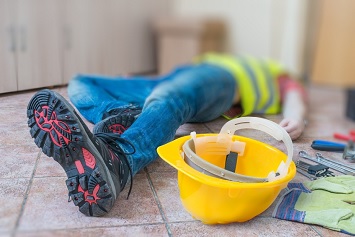U.S. workers are experiencing fewer workplace injuries, illnesses, and fatalities than 25 years ago, the Labor Department’s Bureau of Labor Statistics (BLS) said.

The BLS has collected workplace fatality, illness, and injury data since 1972. The Bureau published a retrospective “25 Years of Worker Injury, Illness, and Fatality Data,” showing that while many workers still become injured, sick, or even die on the job, the numbers continue to decline.
Decline in Fatalities
Workplace fatalities declined 17% between 1992 and 2016. In 1992, there were 6,217 fatal occupational injuries and 5,190 in 2016. At the height of the last recession in 2009, there were 4,551 fatal occupational injuries—the fewest over the 25-year period.
Construction and transportation have remained the deadliest industries. Heavy tractor-trailer truck driver was the occupation with the most fatal occupational injuries for both the manufacturing and oil and gas extraction industries. From 2003 to 2016, the industries with the most on-the-job fatalities were:
- Construction, with 13,782 deaths—the most dangerous occupations were construction laborer, frontline supervisor, and carpenter;
- Transportation, with 10,952 deaths—the most dangerous occupations were heavy and tractor-trailer truck driver, taxi driver and chauffeur, and commercial pilot; and
- Manufacturing, with 5,177 deaths—the most dangerous occupations were heavy and tractor-trailer truck driver; frontline supervisor; and laborers and freight, stock, and material mover.
More Older Workers Dying
While fatal occupational injuries declined for workers in the 25-to-34 and 35-to-44 age groups from 1992 to 2016; there was an increase for workers in the 55-to-64 and 65-and-older age groups. In fact, deaths for workers aged 55 and older increased 50% from 1992 to 2016.
In 2016, the rate of fatal injury for all workers was 3.6 deaths per 100,000 full-time equivalent workers. For workers aged 65 and older, that figure was 9.6.
Nonfatal Injuries Sidelined Workers
From 1992 to 2016, there were 1.5 million nonfatal injuries or illnesses that caused workers to miss work or have their duties changed. However, the proportion of job transfer or restriction cases in which the worker is on restricted duty or transferred to another job as a result of the injury rather than away from work has grown over the past 25 years. In 2016, nonfatal injuries of U.S. workers accounted for 655,600 days away from work but 892,300 days on restricted duty or transferred to another job.
The BLS collects fatality, illness, and injury data from local and state governments, as well as private industry. Local and state governments may have rates of nonfatal occupational injuries that far exceed the private sector. However, the high rates may reflect the occupations in public sector employment. For example, the 2016 nonfatal incidence rates (per 100,000 employees) show high public sector rates in some hazardous occupations:
- The rates for police and sheriff’s patrol officers were 515.9 employed by state governments, 445.7 in local government employment, and 17o in private industry;
- For nursing assistants, 627.5 employed by state governments, 421.5 in local government employment, and 321 in private industry; and
- For firefighters, 421.6 employed by state government, 381.6 in local government employment, and 92.7 in private industry.
MSDs Taking Workers off the Job
Musculoskeletal disorders (MSDs)—sprains and strains or carpal tunnel syndrome resulting from exertion or repetitive motion—still account for 32% of private sector days away from work cases. The back was the most frequently injured body part and overexertion one of the most common events. However, the rate of MSDs declined from 49.6 per 10,000 full-time workers in 2003 to a low of 29.4 in 2016.
The trends over 25 years show improvement in workplace safety and health. The BLS data also reveal where work remains to be done. Employers continue to be confronted by the need to:
- Adapt jobs and the workplace to older workers;
- Reduce the severity of transportation incidents, including motor vehicle crashes; and
- Train and provide assistance in lifting.
